IT WAS the driest year on record when 21-year-old Paul Gatschet saw the advertisement in the local paper.
Volunteers wanted, announced the Hays Daily News. Farmers near La Crosse, Kansas, had a jackrabbit problem and they needed help corralling the crop-destroying critters. So one afternoon, Gatschet and his younger brother, George, drove south from Hays to join the rest of the volunteers. Neither Gatschet had participated in a rabbit drive before, but they were willing if it kept local farmers from losing their crops.
This particular drive was slated to comb four sections of rolling prairie. Organizers loaded nearly 80 volunteers—all boys and men this day—into cars and farm trucks, then dropped them off again along the perimeter. By the time everyone was in position, the hunters had formed a spindly square, each side stretching 2 miles long across the countryside. Then they started walking.
One of the many remarkable things about this rabbit drive was precisely how unremarkable it was in that era. During the height of the Dust Bowl—sometime between 1934 and 1936—the Kansas Emergency Relief Committee reported more than 98,000 men, women, and children took part in 269 drives across 13 counties in western Kansas. More than 2 million jackrabbits were killed or captured across 1,974 sections, with an average of 923 rabbits killed per drive. They were, by all accounts, slaughters.
The chaos and brutality of the drives bore little resemblance to what any modern hunter would call rabbit hunting. Still, the cooperation required to pull off the largest organized game drives in North America’s written memory is astounding. Western jackrabbit drives remain a fascinating, if mostly forgotten, chapter in the history of small-game hunting. They’re also just one way Americans coped with one of the worst ecological disasters in history.
Although hundreds of thousands of Kansans took part in the drives, Gatschet is one of few participants still alive today. Now 88, Gatschet figures that drive occurred, by his best recollection, in 1956—a full two decades after the Dust Bowl. But the severe drought conditions of the 1950s had replicated the failing crops and overwhelming jackrabbit numbers of the 1930s. Apart from the clothing the men wore to the rabbit drives that year—jeans cuffed above the ankles, white T-shirts, the occasional black leather jacket—it played out just as hundreds of drives had across western Kansas over the previous 50 years.
“I’m not too proud of it,” says Gatschet. “But this is what happened.”
Kansas Rabbit Drives During the Dust Bowl
Paul Gatschet was born in October 1934, smack in the middle of the Great Depression and just in time to weather the worst of the Dust Bowl. Wall Street had crashed on Black Tuesday exactly five years before to send the global economy spiraling. The Black Sunday dust storm, named for its suffocating, sun-blotting conditions, would howl across the High Plains at 60 mph by the time Gatschet was six months old. Drought was the new reality. Plows from Nebraska to Texas had ground the region’s fertile topsoil into oblivion. Native grasses had all but vanished, along with their deep roots that held the prairie in place. Wind blew away whatever was left.
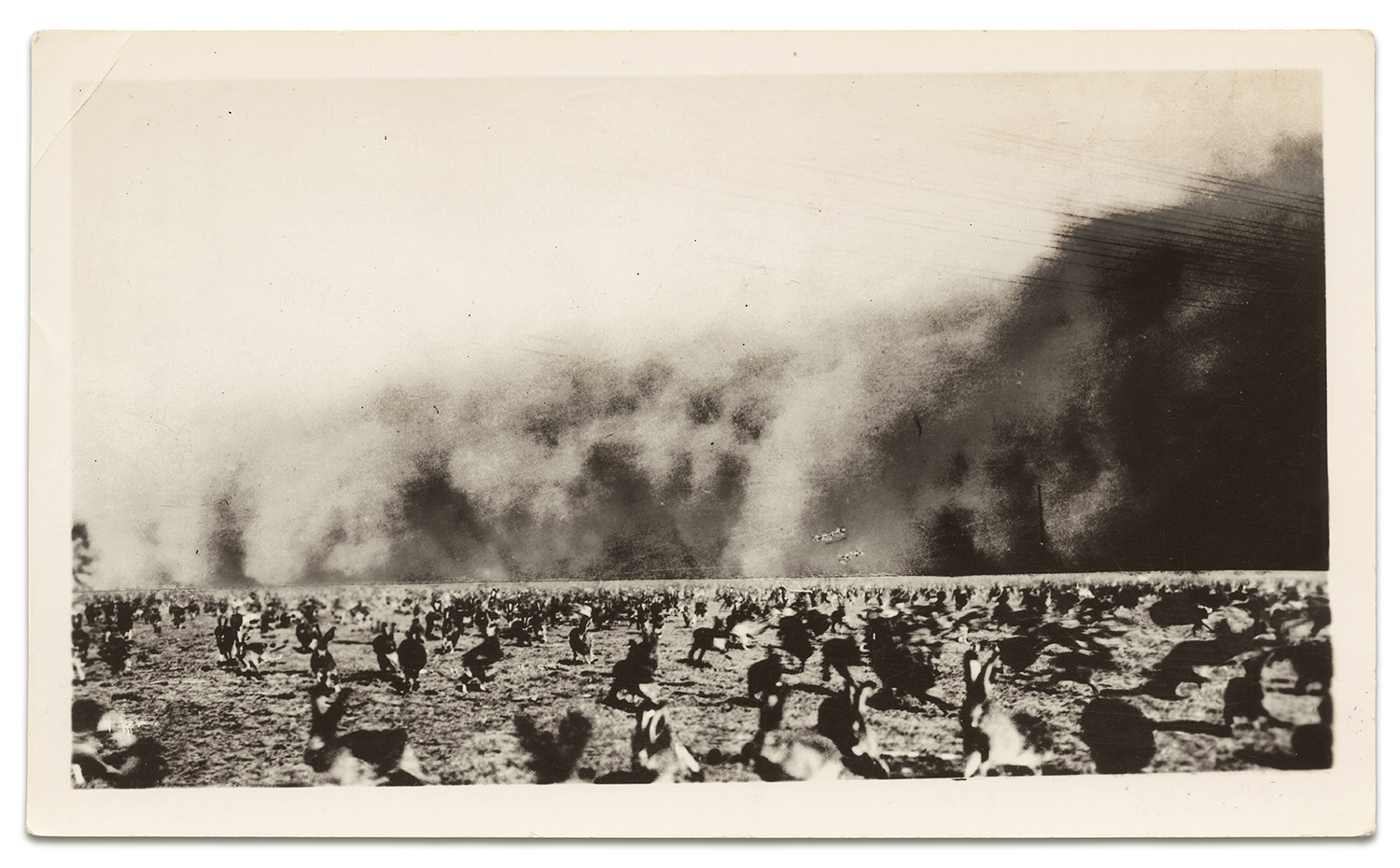
Gatschet remembers those years as mostly dry and hot. Swarms of hungry grasshoppers and blowing dust descended on his hometown of Hays and surrounding Ellis County. Many children developed dust pneumonia—a chronic and sometimes fatal condition—from inhaling all those tiny silt particles.
“My mother told me she covered my crib with a wet sheet to keep me alive,” says Gatschet, who grew up in a three-bedroom house on 11th Street. “Real fine dust would come in through the walls. As a baby I didn’t know anything about that, but as I got older, I remember we had dust storms. It got pretty thick, and of course that wasn’t good for your lungs.”
Like most rural boys of his generation, Gatschet spent his childhood hunting with his father. There were no deer in the region yet, but Kansans could hunt ducks and geese. And rabbits. Lots of rabbits.
Black-tailed jackrabbits (which are actually hares, not rabbits) can grow up to 2 feet long and reach speeds of up to 40 mph. Oversized hind legs launch them across desert sage and grassy prairie, and their giant ears release heat to cool their bodies. Jackrabbits are prey animals, with often-bulging amber eyes that can scan nearly 360 degrees for predators. They have a knack for speedy replacement. Females can produce multiple litters each year, with up to eight young in each.
Jackrabbits are primarily desert dwellers, so it’s not particularly surprising that their numbers swelled when drought settled over the prairie. The critters ransacked already struggling crops like wheat and sugar beets and stripped bark from precious shelterbelt trees. It was common to see jacks in the daytime and easy enough to shoot them with pistols as they fed in the fields.
“When it was hot and dry, we saw a lot of rabbits,” Gatschet says. “When the coyote population got low, the rabbit population seemed to go up too.”
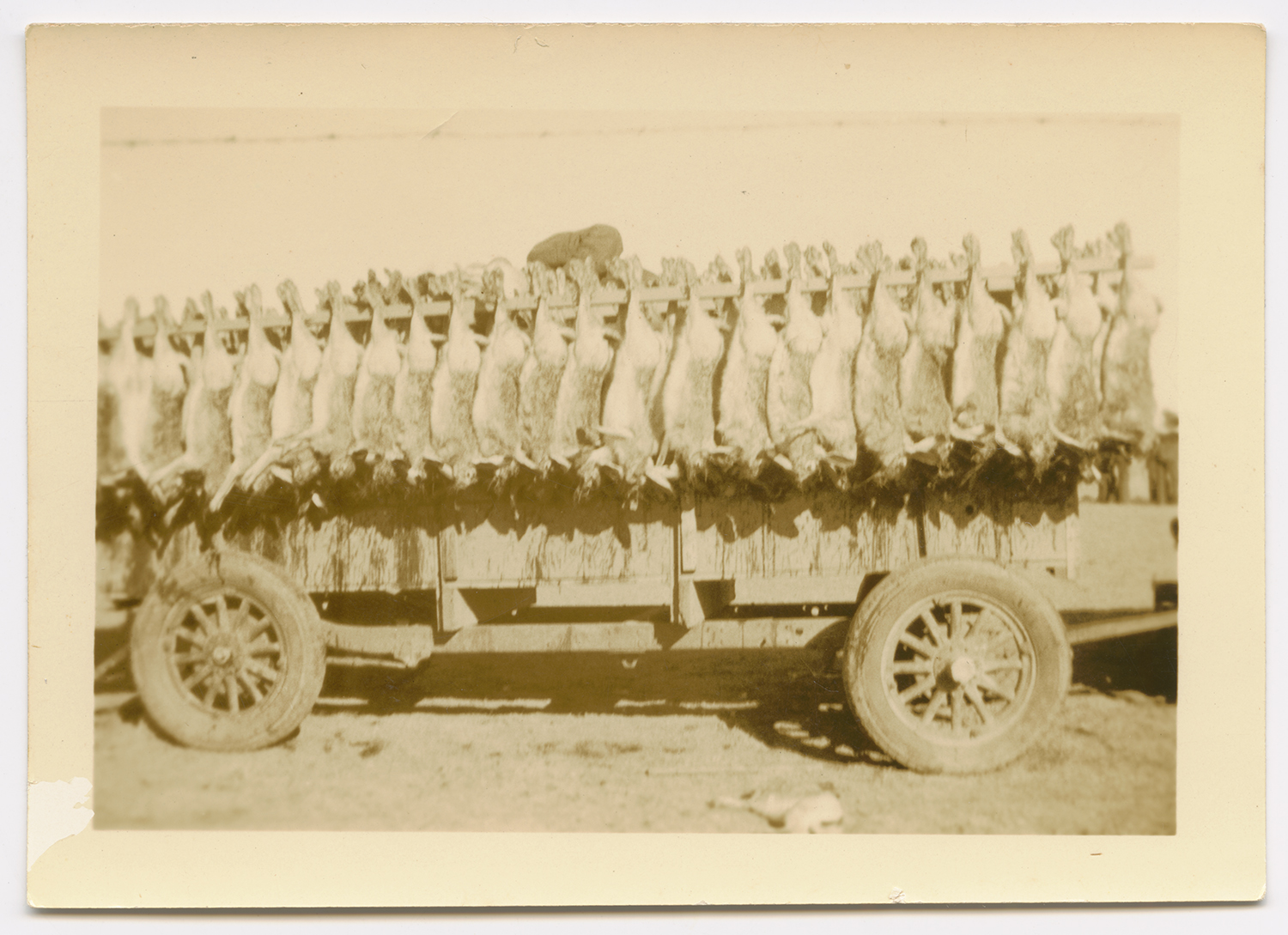
Gatschet’s father was a schoolteacher and his mother was a good cook with five children to feed, so their boys brought home whatever they could during and after the Depression. Gatschet remembers those jackrabbits—fried, baked, stewed—tasted pretty good.
By the time the Gatschet brothers spotted the newspaper ad in 1956, Paul was out of the Army and married with a kid of his own on the way. Drought worse than the Dust Bowl had returned to the prairie. That meant rabbits had, too.
Like the jackrabbit drives before it, organizers didn’t allow guns. They were much too risky with so many people and so many rabbits running around. Instead, volunteers carried clubs, resulting in a mob’s stockpile of sticks, baseball bats, and splintered 2x4s, some even wrapped in barbed wire. The Gatschets hadn’t brought anything like that, so someone passed Paul the spoke of an old hickory wagon wheel. The wood felt heavy in his hands.
The drivers began walking toward the center of the four sections, where an enclosure of chicken wire had been erected. Their plan was to funnel the rabbits into the pen and dispatch them there.
At first it felt to Gatschet like they were corralling cattle. They started kicking up jacks, which leapt and hopped ahead of them. Coordinators kept an eye on the drivers, nudging or checking their pace to ensure the pests didn’t squirt back through the lines. When the men closed on the final square mile, the driven jackrabbits began to converge. But it wasn’t until the rabbits saw their own kind running toward them that chaos broke out.
“You could tell the rabbits were confused. As the group got smaller and smaller, it got to where there were just solid rabbits in the middle—about 50 yards square. Now and then you’d see a rabbit just go—like, Oh, he’s taking off. And he would go, because we didn’t have any guns.”
One nearby rabbit made a run for it, and Gatschet reacted out of instinct.
“I threw my hickory spoke at him.… It was substantial, and dagnabbit if I didn’t hit the rabbit in the head and roll him.”
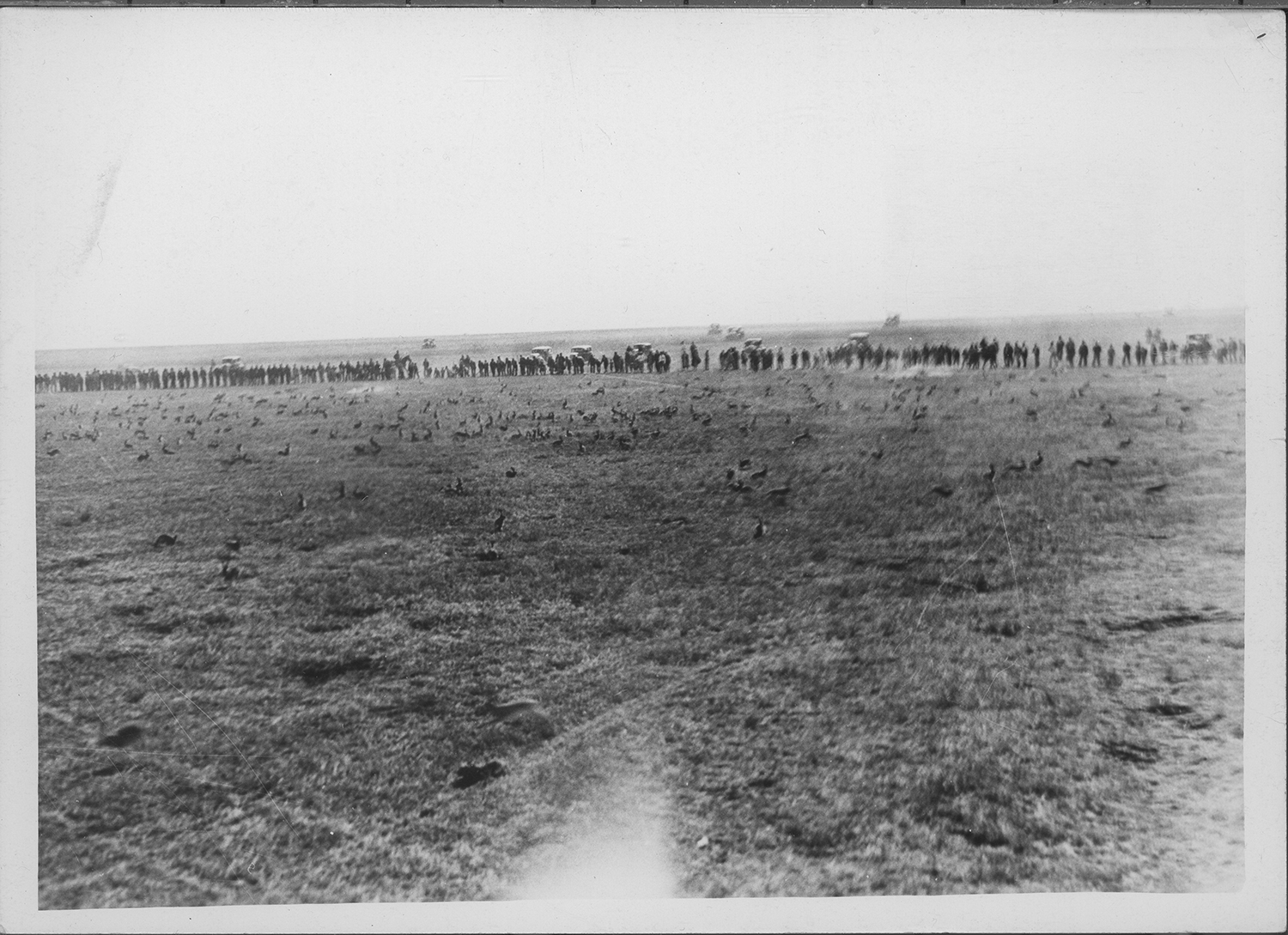
Among the boiling jackrabbits were two or three coyotes that had gotten swept up in the drive. As the coyotes made their own bids for freedom, they burst through the human wall only to be met by a knot of coyote hunters. Those men hadn’t been allowed to carry guns either. Instead, they’d brought their dogs.
“The greyhounds got beat up pretty well,” says Gatschet, recalling a coyote that ripped one dog’s slender jaw. “It got pretty gory. But usually those hunters had one or two Russian wolfhounds with them, and the wolfhounds would come in for the kill. It was a dual hunt.”
By now the square of drivers had pushed the rabbits into the chicken-wire trap. Most Dust Bowl corrals were octagonal, built 54 feet across and anchored by sturdy posts. As the size of the rabbit drives tapered into the 1950s, so did the corrals.
“The little square got smaller and smaller, and the rabbits inside the fence started jumping but they couldn’t make it over. And what surprised me was—I just thought it was like cavemen. Some of the guys started to holler, ‘We’ll get you SOBs!’ And a call went up among the men. They all just rushed the rabbits, clubbing them left and right,” says Gatschet. “The rabbits could tell it was the end.”
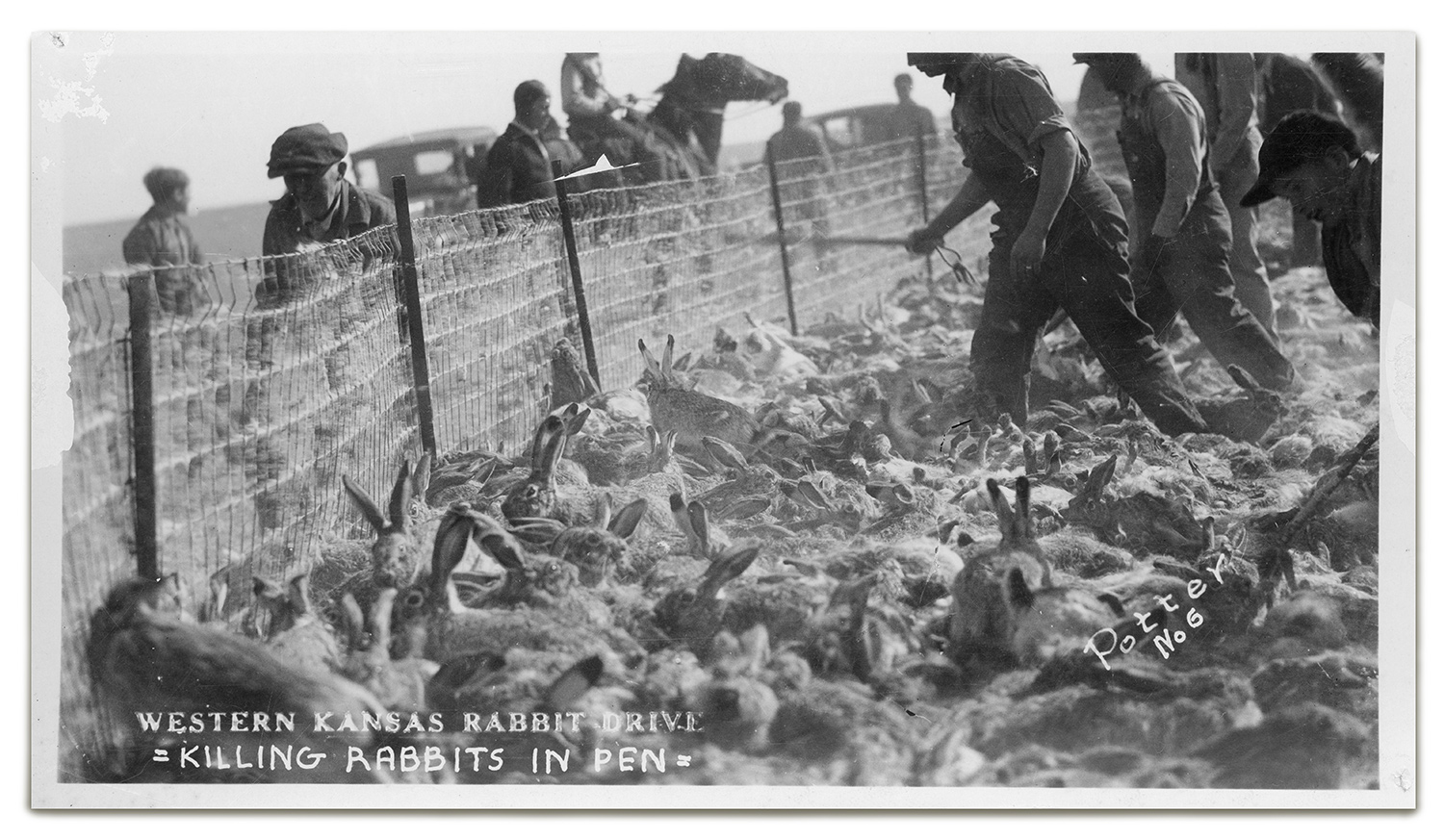
Rabbit Drives in the West
It’s hard to pinpoint the beginning of jackrabbit drives in American history, but one thing is clear: hunters were driving rabbits long before Europeans arrived.
Many early media reports credit the Paiute-Shoshone with developing the jackrabbit drives. This is true enough based on archaeological evidence and firsthand accounts of modern Paiute drives in Nevada, but the Paiute-Shoshone corralled rabbits for subsistence.
“The old rabbit drive was and still is a favorite means of producing food for these desert people,” Harry W. Gilmore wrote in American Anthropologist in 1953. “…Each person tak[es] his station about 50 feet from those next to him. This line circles around toward a lake or river, thus forming a semicircle. By closing in gradually, the semicircle becomes smaller and smaller, and the animals are unable to escape. Finally they are trapped between a solid line of people and a body of water and are easy prey for arrows and ordinary sticks.”
One of the first mentions of controlling native jackrabbits as vermin appeared in Michigan’s South Haven Messenger in 1846. The newspaper column, “Slaughter of Jack Rabbits: The Western States Are Alarmed About the Pests,” explained that while Colorado and California’s rabbit drives “have a certain element of sport and general frolic, [the drives] are nevertheless a very serious business.”
That particular account is rife with fear: the farmers feared devastation of their crops; the agricultural secretary feared the West would become the next Australia. (Though Australia also organized its own rabbit drives, those farmers had a true pest problem on their hands. Rabbits are an introduced species to the continent.) Other accounts made it clear that rabbit drives were festivals that rallied residents around a good cause.
“The largest drives are extensively advertised and the railroads run special excursions to the scene of conflict,” reads a 1901 Kansas City Gazette article about the California drives. “Everything assumes holiday attire. Popcorn stands, barbecues, red lemonade, circus balloons … and gamblers interest the great crowds of 10,000 to 20,000 people which assemble to see the fun. …The rabbits cry shrilly like a baby in pain when being killed. The fur flies in an obscuring cloud. Sometimes the young rabbit hands hit one another in the excitement and dust of the slaughter and the drive ends up in a free fight to the intense amusement of spectators.”
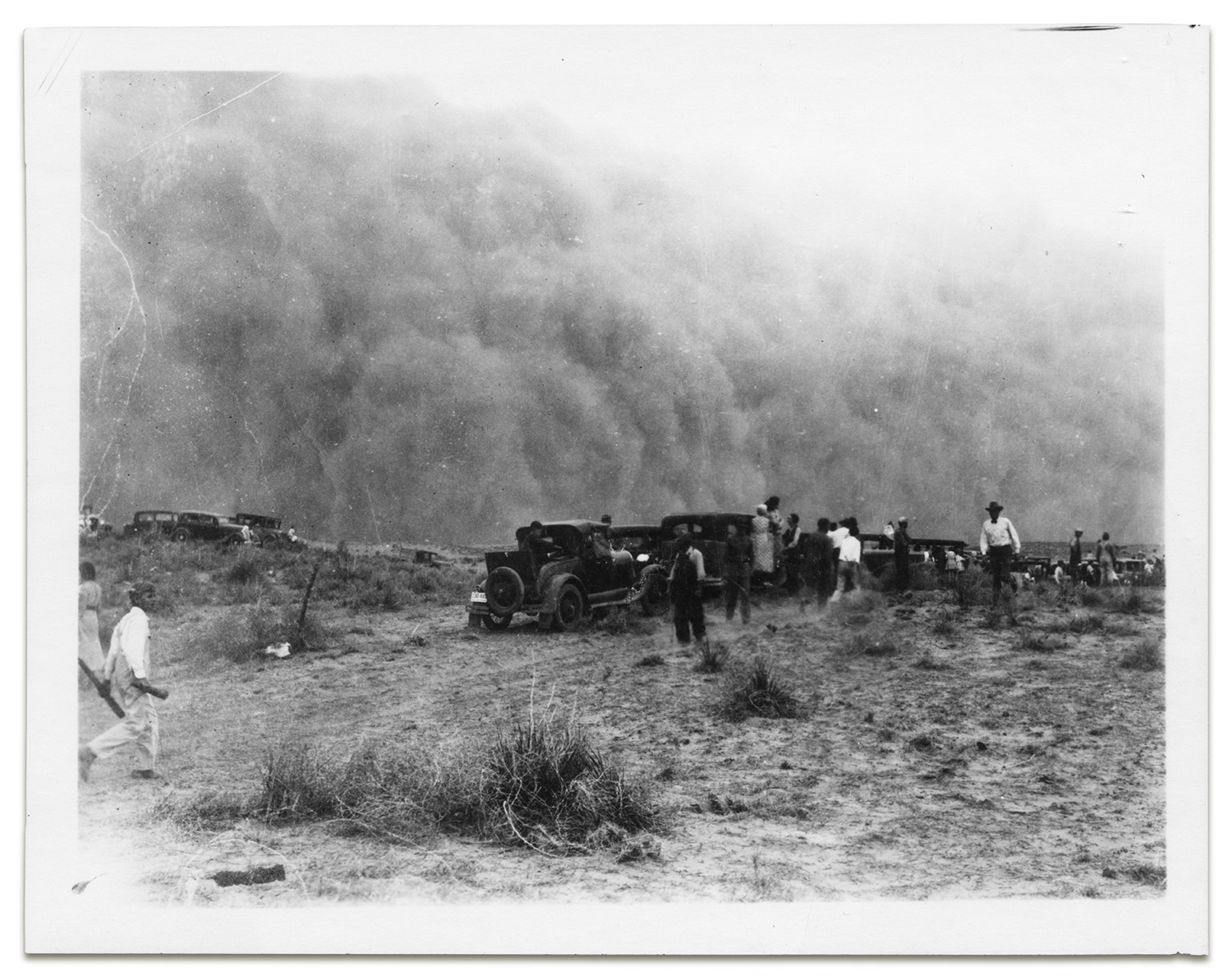
Kansans began putting on their own drives in the mid and late 1800s, but the revelry didn’t drain away until drought and dust arrived with the Great Depression. By 1935 there were an estimated 8 million jackrabbits in 30 western Kansas counties. Clubbing the pests seemed the most practical solution. After all, no one could afford ammunition to shoot the rabbits once corralled. Jackrabbits also provided a source of food and, at first, income. Some counties paid bounties between 1 and 4 cents per rabbit while they could afford it. (Hodgeman County, just southwest of Hays, stopped paying out after 44,000 pairs of ears were turned in.)
As crops continued to fail, livestock died, and money dried up, Kansans—who bore some of the harshest Dust Bowl conditions—grew more desperate. Normally self-reliant farmers were losing everything. Many sold off land to pay mounting debts. They couldn’t feed their families. Their children were falling sick and even dying. In the 1930s, it felt like the world was ending. For some, it had.
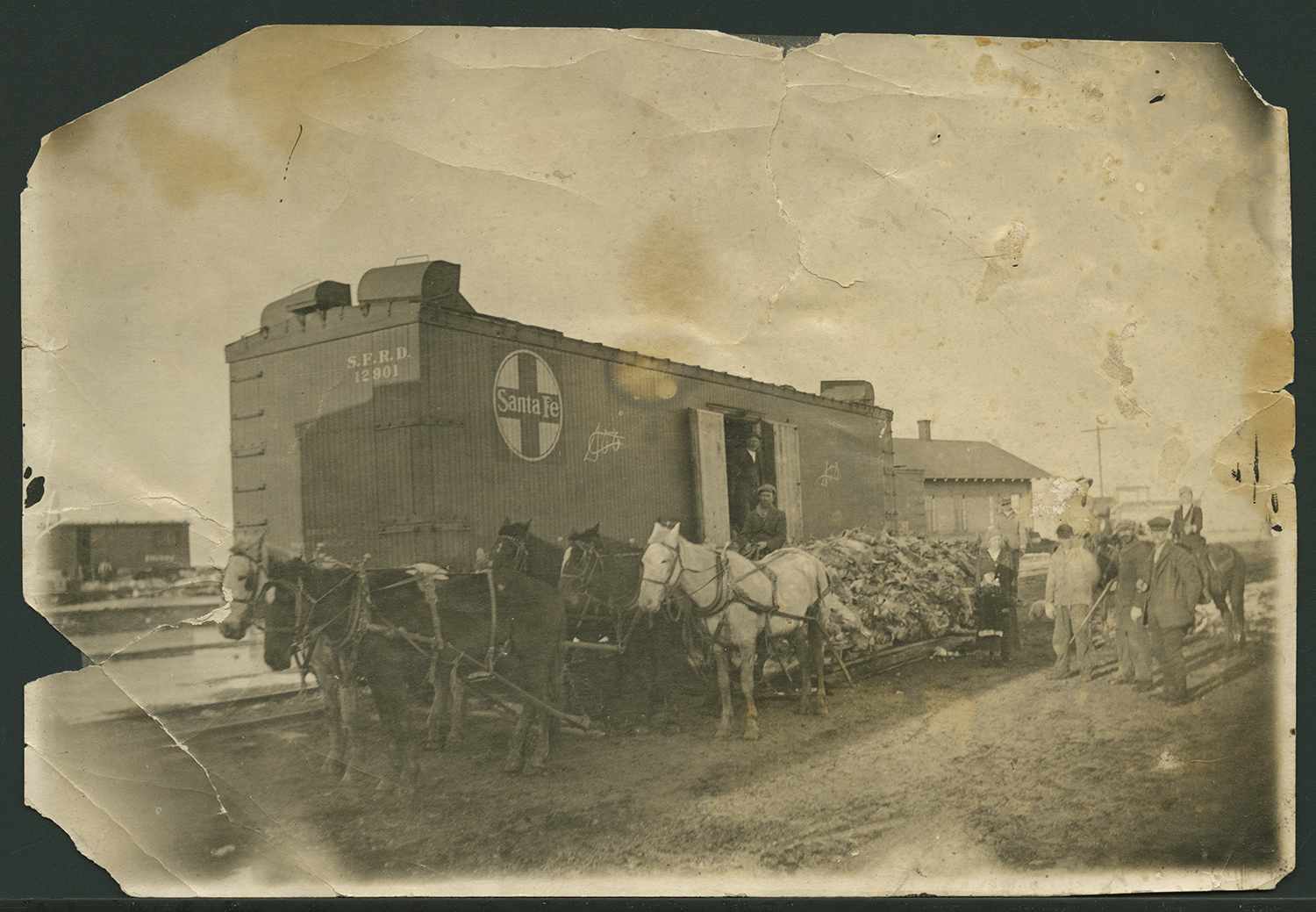
That helplessness explains, in part, the violent mob mentality that so surprised Paul Gatschet 20 years later. As author Timothy Egan explains it in his book The Worst Hard Time, residents who were trying to survive during the Dust Bowl “vowed to make a last stand” against the latest threat to their livelihoods: jackrabbits. “If nature is out of whack, then we’ll fight with everything we got.” The drives had strayed beyond necessary evil into controlled chaos. Rabbit drives were almost like state-sanctioned riots, where after church service on Sundays, “a mob of people with clubs herded rabbits into a corral and smashed their skulls.”
Kansans funneled their desperation, frustration, and fears into the singular task of killing the critters they felt were threatening what little livelihood remained to them. It was the farmers versus the rabbits, and it was clear who had to win.
Even if the jackrabbit drives became less of a festival and more of a fight, the Kansas Emergency Relief Committee made sure to celebrate them with widely distributed newsreel footage.
“Extermination of the rabbits has been a value to the counties in many respects,” says the unnamed narrator of a 1936 film touting the agency’s accomplishments in 1943. “While it would seem from this that all the jackrabbits in the world had congregated in the western part of the state of Kansas, there are numerous neighboring states in which rabbits of any kind are a scarcity.”
Live jackrabbits were loaded into trucks and driven to other states, while some dead rabbits were butchered and eaten. Many Kansans feared catching rabbit fever, however, and most were ground into fertilizer and feed for chickens and hogs.
It’s impossible to accurately estimate how many drives were organized nationally (thousands) and how many jackrabbits were killed (millions). The last widely publicized jackrabbit drives were organized in 1981 in Mud Lake, Idaho. While locals were more concerned with protecting their crops than their public image, they made headlines as national media picked up footage of the drives.
“About 800 men, women and children, armed with ax handles, baseball bats, tire tools and golf clubs, stretched across a mile of the desolate prairie near Mud Lake and rounded up jackrabbits which they claim have done an estimated $5 million in crop damage…” read one widely syndicated Associated Press article. “Many of the jackrabbits were beaten to death during the drive and others captured in a pen had their necks broken and their heads decapitated.”
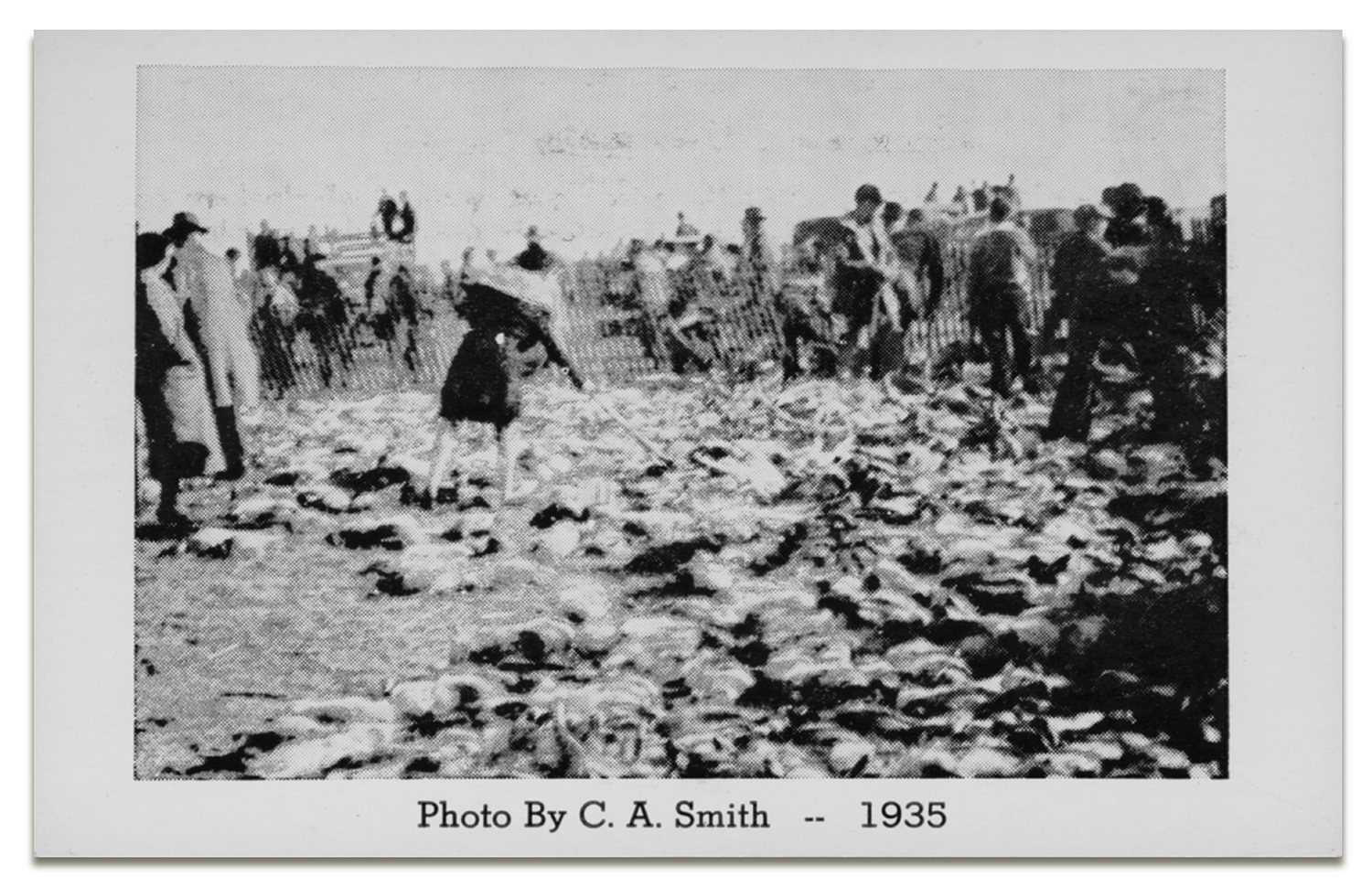
Animal rights groups, including the Idaho Humane Society and the Fund for Animals, sued the drive organizers on grounds of animal cruelty. The Idaho Supreme Court ultimately sided with the farmers.
Then, in 1983, the region’s jackrabbit population crashed.
Jackrabbits in Modern Kansas and the West
If jackrabbits received excessive ire in the early 1900s, the opposite is true today.
“Unfortunately rabbits don’t get much attention in our state, or most states,” says Jeff Prendergast, the small game specialist with the Kansas Department of Wildlife and Parks. “I’m from Missouri and that’s what I grew up hunting—rabbits. But out here quail and pheasants are king. Rabbit hunters are almost treated like second-rate citizens or hillbillies. That’s just my impression. But it definitely seems like there’s more of a gentleman status to the bird hunters.”
Prendergast holds just one of two small-game positions within the entire KDWP agency, and the resources at his disposal are limited when it comes to jackrabbits. KDWP focuses on demand from bird hunters and doesn’t often hear from rabbit hunters. When they do, it’s usually about cottontails. The farther west you drive through Kansas, the more likely you are to spot a jackrabbit. By the time jackrabbits began appearing in written accounts of the Western frontier, settlers had already disturbed the natural landscape so much that it’s hard to say what “normal” looked like. There’s a lot biologists don’t know about jackrabbit populations then or now.
“They cycle,” Prendergast says. “They seem to do well in dry conditions, like during the Dust Bowl times, whenever they had those kind of [population] explosions. If you think about jackrabbits as a whole, you have different species—but you get a lot of jackrabbits in the arid Southwest—Arizona, New Mexico. So it makes sense that they can persist in those dry environments and those dry years.”
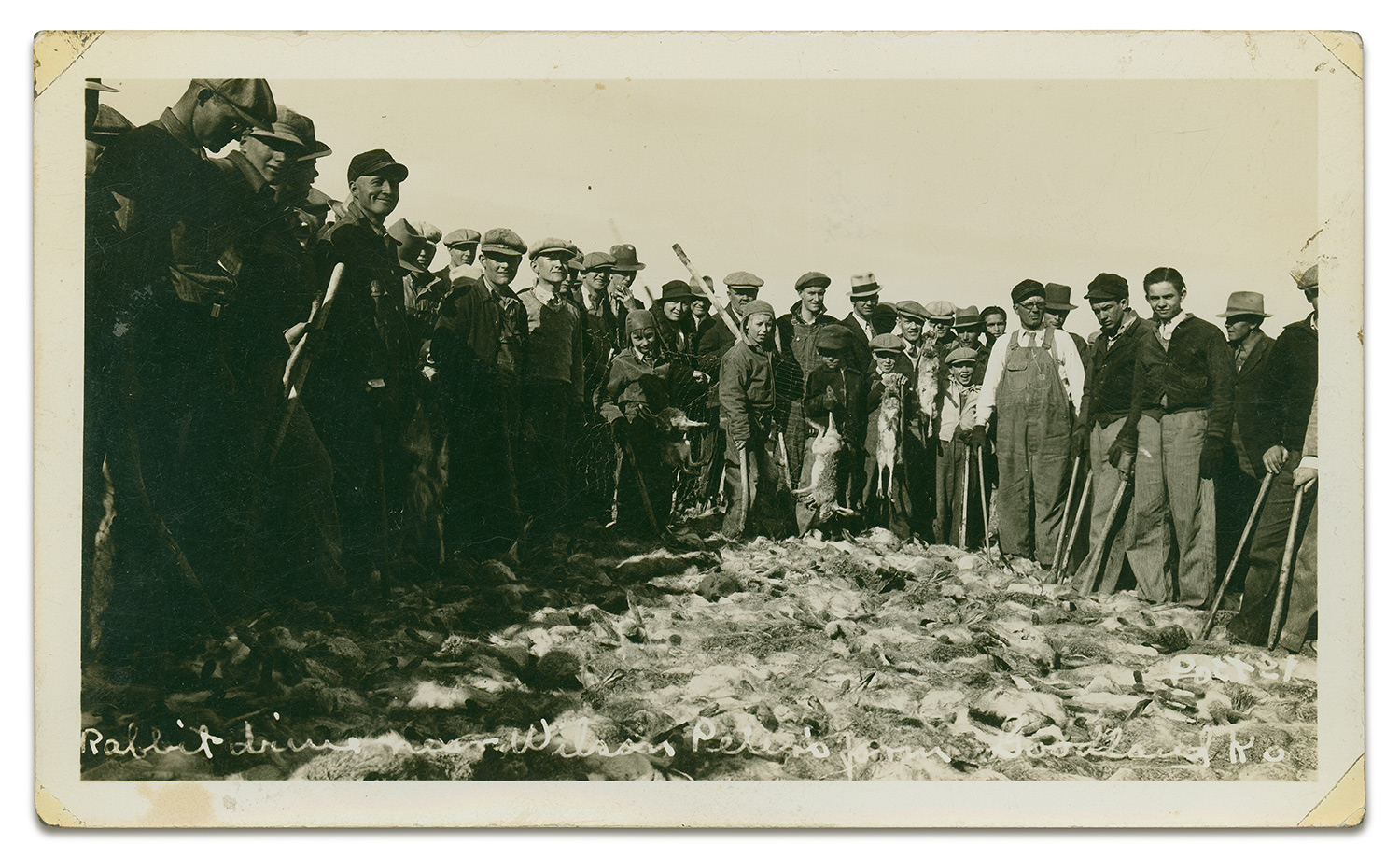
It’s hard to gauge just how well jackrabbits are doing in Kansas today, and Prendergast couldn’t provide an estimate on a total statewide population. He does know, based on the state’s annual rural mail carrier survey and excluding those natural population cycles, that their numbers have been relatively stable since the 1970s.
In the northern Great Basin, a black-tailed jackrabbit’s population cycle lasts between 7 and 11 years. “Jackrabbits are known for their dramatic population fluctuations,” reports the USFWS, and their highs “may be twice or even hundreds of times greater than during population lows.”
Still, it’s been years since black-tailed jackrabbit plagues made headlines. Which is puzzling: We know jackrabbits overran the country from Kansas to California during historic drought. And we know the West is currently experiencing record-breaking drought. So why aren’t we beating back rabbits with sticks anymore?
Researchers aren’t sure. Different studies point to different culprits, and the answer probably lies in a combination of disease, parasites, rising predator populations, and changing habitat as edge cover diminishes. It’s also possible that the absence of black-tailed jackrabbit spikes reflects an overall species decline. Maybe there just aren’t enough critters to reach noticeable levels anymore.
And while both white-tailed and black-tailed jackrabbits were present in Kansas when settlers arrived, white-tailed jackrabbits—historically more present in the north of the state—have been extirpated from the state.
“When they talk about jackrabbit drives where they’d surround a couple sections and push hundreds of rabbits together, you’re not going to do that now,” says Prendergast. “We’re definitely not at the levels we’ve seen historically. We’re not at levels that we would consider concerning, but I don’t know what to say a healthy [level is].”
Jackrabbits are a species of least concern in Kansas, with a liberal bag limit of 10 jacks per day and a year-round season. Though few hunters target jacks, harvest numbers help shed some light on jackrabbit numbers. Last season, an estimated 1,625 hunters in Kansas killed about 3,575 jackrabbits. Most of those were likely opportunistic shots taken by pheasant hunters. In 2006 to 2007 (the earliest year for which data was available), some 3,640 hunters killed about 57,900 jackrabbits. This difference is less a reflection of declining rabbit numbers than an example of a spike in their population cycle.
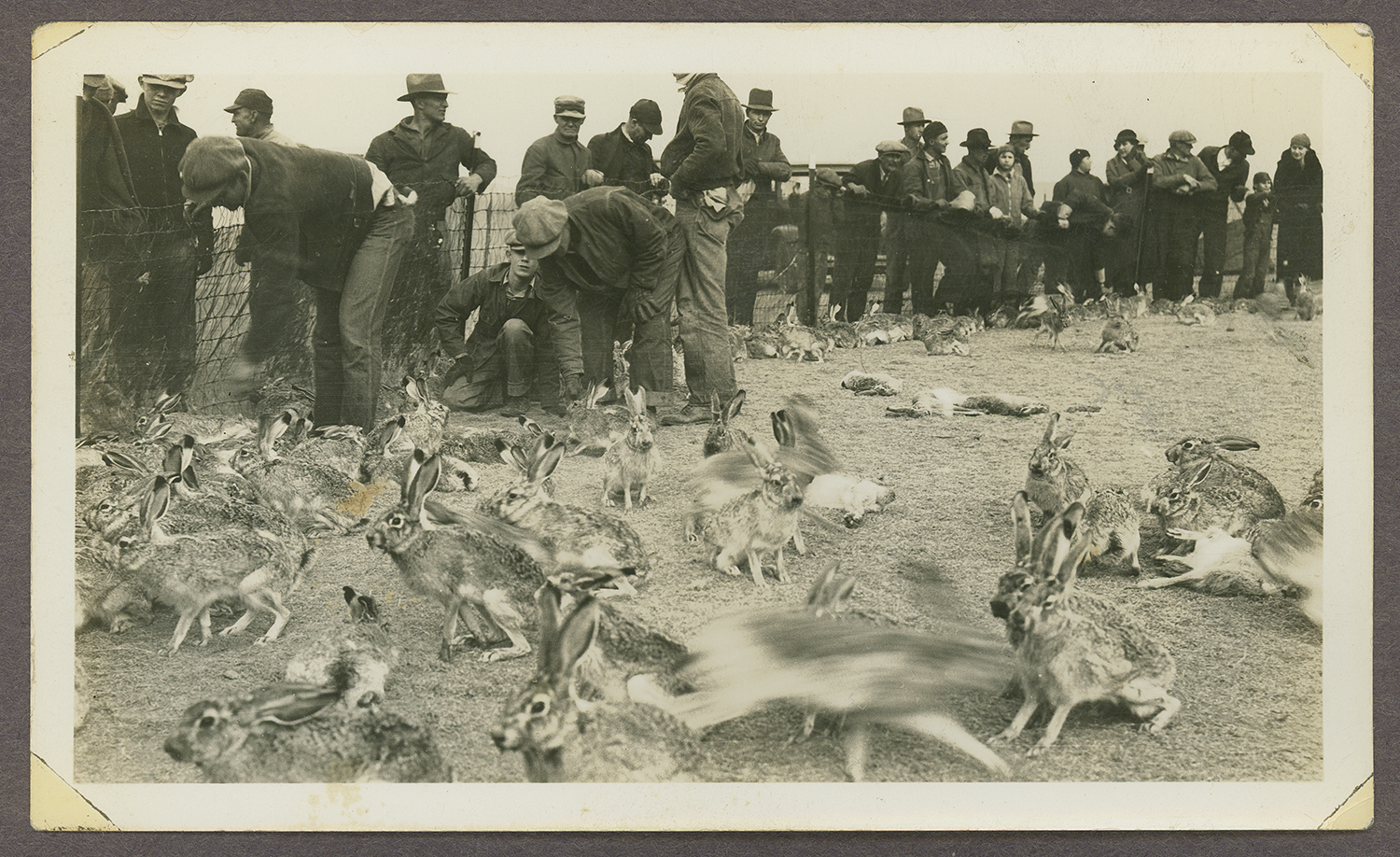
“Now you don’t see many jackrabbits in the daytime,” says Gatschet, who still lives with his wife in Hays, in the same house the couple lived in during the 1950s. “We used to see a lot of them in the daytime when we were younger. But I understand from some of my friends who hunt that they still have some north of Hays, but you have to know which field to go to get them.”
In the 10 years Prendergast has worked as KDWP’s small-game specialist, he can’t recall a single complaint about jackrabbits.
“We don’t really see the densities of jackrabbits we once did,” says Prendergast. “So it may be that we’re not noticing the small damage that a few jackrabbits cause over what was the perceived damage. Even in the Dust Bowl, the jackrabbits were something of a scapegoat. [People] needed something to blame for the crops failing and eating what little was out there. Realistically the jackrabbits probably were eating the brushy, weedy stuff that wasn’t really impacting the farmers. The crops were failing anyway.”
AS HIS FELLOW Kansans clubbed the trapped jackrabbits to death, Paul Gatschet mostly just watched, his hickory spoke hanging by his side as volunteers shouted and swatted and swore.
“To hear the rabbits, that ‘eh eh eh,’”—Gatschet imitates the panicked bleat of a rabbit in distress “it was a dramatic thing. We went out there thinking we were going to help the farmers. But I left with the feeling they were just God’s creatures. They were just rabbits. They had to eat. So what do you eat? There’s wheat, so help yourself to the farmer’s wheat. And they did. I didn’t feel good about it, and I never went on another drive.”
Read more OL+ stories.
